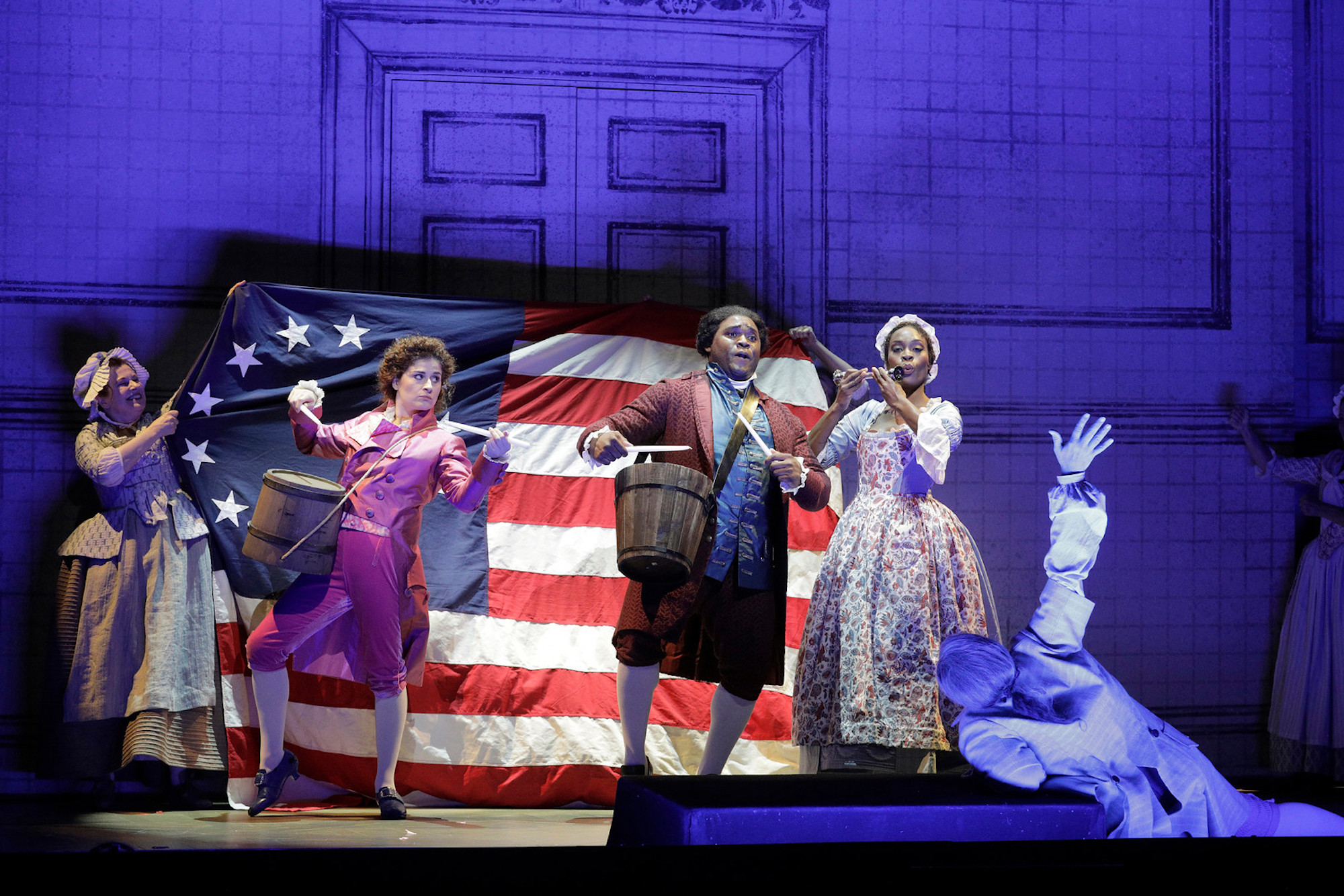There aren’t many operas that I can watch over and over with the same degree of interest, joy and eagerness as I do with new operas, even if in the end I don’t really like the premiering opera that much. This puts me at odds with most major opera companies, whose programming is financially obliged to reproduce repertoire, repeating the same 10 or so operas with a few lesser known and new operas in between.
However, there is one opera I’d go see any day of the year, any year of the decade: Mozart and Da Ponte’s Marriage of Figaro. A new version of the opera opened at San Francisco Opera this past weekend, and it’s as delightful as a production can be.

The opera, which premiered in Vienna in 1784 was based on the second in a three-part stage comedy by Beaumarchais, which radically hit at aristocratic privilege in Europe at a time when democracy and the common man were on the rise. The play must have had great appeal to both the scampish Mozart and the roguish Da Ponte, both had struggled to realize support for their talents in a world dominated by arbitrary privilege and fickle power. Plus ça change, plus c’est la meme chose!
The opera tells how the servants Figaro and Susanna manage to marry without their philandering employer Count Almaviva reinstating his droit du seigneur and commandeering Susanna for his own sexual desires and uses. Complications to the plot include the Countess’ despair over her husband’s infidelity and the randy teenager Cherubino’s mirroring of the Count’s unrestrained sexuality.
Sex and infidelity were certainly issues Da Ponte struggled with, having had to flee several cities chased by irate husbands. One of them poisoned the poet and left him toothless, a disability that didn’t do much to slow down his romantic escapades. He never lost his wit though, which is on ample display in this “extract” of Beaumarchais’ play. It made him the perfect librettist for Mozart’s equally witty and playful music. The opera, with all its complications and absurdities, moves along at a bubbling clip. Even its contemplative moments are laced with vivaciousness. And as always, Mozart’s ensembles are to die for.
San Francisco Opera’s production is directed by Canadian Michael Cavanagh. Like Francesca Zambello’s treatment of The Ring Cycle, Cavanagh sets The Marriage of Figaro in the US, and the opera has opted to do all three Mozart–Da Ponte collaborations in American settings. Except for a reenactment of the Spirit of 1776, with Cherubino and Figaro playing drums while Susanna plays the flute, supernumerary servants holding up the flag of the 13 colonies behind them, there’s not much difference between a European setting and an American one.
The time is that of the original opera, or late 18th-century, post-Revolutionary America. And the opera takes place on the Almaviva Estate, Mid-Atlantic USA. The sets by Erhard Rom are comprised of both drawn and finished architectural detail, a metaphor for the America of the time being a house under construction.
The concept is just that, a concept, and a guide. But what makes this production wonderful is the on-stage directing and the ample acting and singing talents of its cast. Susanna was sung by Jeanine De Bique who, besides having the necessary vocal chops, has a real flare for comedic excess. Bass-baritone Michael Sumuel presented a more dignified and slightly troubled Figaro, his voice resonant with male aplomb.
On the aristocratic side: Nicole Heaston’s Countess was thoroughly lovely, mixing graciousness with poignancy. And Levente Molnár made a vocally imposing Count, with heaps of stage presence, accented by his tall and well-fed physicality. I loved him in this role, he became so easily unseated from his dignity, letting out little screams of surprise when encountering the unexpected and unwanted. His nemesis Cherubino, sung splendidly by Serena Malfi, allowed for one of the most striking displays of Constance Hoffman’s costume design when he/she appeared in hot-pink velvet breeches and matching frock coat. Yowza!
Catherine Cook as the marriage-blackmailing Marcellina, her conniving partner Dr. Bartolo sung by the big voiced James Creswell, and booming Greg Fedderly as the music teacher Basilio were absolute comic brilliance.
It was all tied together with a red, white and blue fireworks performance by the San Francisco Opera Symphony under the superb direction of Henrik Nánási.
—Jaime Robles
San Francisco Opera’s production of The Marriage of Figaro continues through November 1. For tickets and information, visit sfopera.com.
